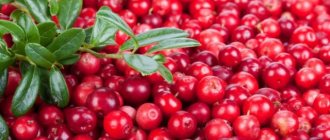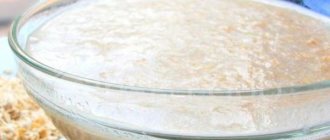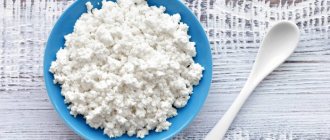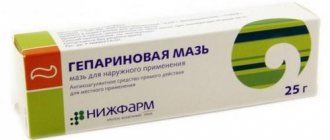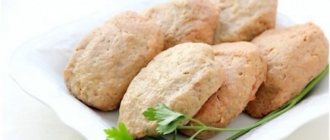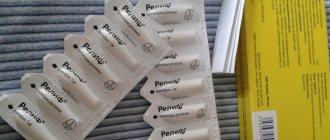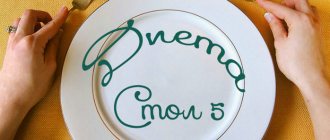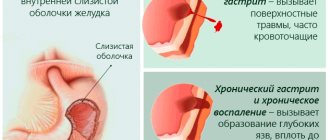Pumpkin for the pancreas during remission of pancreatitis
Honey is a popular product that is known throughout the world for its unique taste and healing properties.
Even in ancient times, it was used to treat many diseases and rejuvenate. In folk medicine, honey is used to treat the liver. Use honey water (1 tablespoon of bee treat is dissolved in a glass of clean warm water), you need to drink it in the morning before meals. This useful folk therapy helps the body wake up, start normal functioning of organs, speeds up metabolism, and strengthens the immune system.
For normal liver function and prevention of pathologies, you can consume honey with cottage cheese. Mix 1 tablespoon of bee treat per 100 grams of curd product; the entire portion can be eaten in the morning as breakfast. Red onions and honey are also sometimes used to treat the liver.
The use of honey for the treatment of the pancreas, gall bladder, liver and cholelithiasis is not always justified. The most common diseases of the organ are pancreatitis and cholecystitis, and if they are aggravated, during a diet, and with fatty liver hepatosis, the use of bee products is strictly prohibited.
But honey for the liver and pancreas can be used in the chronic form during the latent period, but before that you need to consult with your doctor. The high content of easily digestible carbohydrates in a sweet product can harm the organ, so consuming it in excessive amounts is strictly prohibited.
Zabrusny bee product is used during the period of remission and latent forms of liver and pancreas diseases, and cirrhosis of the liver as a preventive measure. It should be introduced into the diet gradually so as not to cause a food reaction. You can eat ½ teaspoon per day, and increase the dose to 1-2 tablespoons if there are no negative reactions.
Features: zabrus is not eaten in its natural form, it must be dissolved in a glass of water.
Pumpkin juice is one of the best products for treating the liver. It contains all the same components as in the pulp of the vegetable. To prevent diseases of the organ and remove toxins from it, you can drink ½ glass of freshly squeezed juice 30-40 minutes before meals.
To squeeze the juice, you need to grate a washed and peeled pumpkin (take a vegetable weighing 500 g). Add ½ cup of sugar and a liter of clean water, put on fire and bring to a boil. Then cook for 1-2 minutes over low heat, remove, add lemon juice from 1 citrus, mix thoroughly and let cool. Beat in a blender or using a mixer until a homogeneous paste is obtained. Store the product for no more than 2 days in the refrigerator, take it the same way as freshly squeezed juice.
In acute pancreatitis, in order to reduce activity and ensure functional rest of the pancreas, therapeutic fasting is prescribed for 2 to 16 days.
As the general condition improves, the diet includes foods that do not burden the pancreas: grated viscous porridge, vegetable puree, vegetable and cereal soups, dietary meat, low-fat fish. Pumpkin is introduced into the diet 4-5 days after an attack along with potatoes, zucchini, and carrots.
The product is well absorbed by the body and does not cause heaviness or discomfort when digested in the duodenum. In addition, pumpkin has an alkalizing effect: it reduces the content of hydrochloric acid in the stomach, enhances the production of pancreatic juice, under the influence of which proteins, fats and carbohydrates are broken down.
For chronic pancreatitis and cholecystitis, pumpkin is consumed during the period of remission after the symptoms have subsided.
Pumpkin contains a large amount of vitamins, micro- and macroelements, fiber, protein, pectin, nicotinic and ascorbic acid. Pumpkin satisfies the body's needs for silicon, cobalt, copper, calcium, potassium, zinc, and iron.
The benefits of pumpkin are as follows:
- has a choleretic effect, which helps get rid of edema;
- improves the condition of the walls of blood vessels, increases their elasticity;
- stabilizes blood pressure in hypertension;
- removes waste and toxins from the body, cleanses the liver;
- due to its diuretic effect, it cleanses the gallbladder;
- slows down the aging process;
- prevents the growth of cancer cells;
- participates in the formation of new cells;
- accelerates epithelial regeneration;
- strengthens teeth and bones;
- prevents the development of cardiovascular disorders;
- neutralizes free radicals;
- normalizes metabolism;
- has a beneficial effect on the condition of the skin, hair, nails;
- reduces the production of stress hormones, improves mood in people prone to depression;
- promotes weight loss;
- lowers cholesterol levels.
Treatment of the pancreas with pumpkin can reduce the severity of symptoms, shorten recovery time, and increase the protection of mucous membranes. Pumpkin improves intestinal motility, equalizes the acid-base balance, reduces the content of hydrochloric acid in the stomach, and activates the production of pancreatic juice.
A large number of dietary dishes can be prepared from pumpkin. Casserole, salad, porridge, pancakes, cream soup, mousse, candied fruits, stew, jelly, baked goods - all this is allowed during the period of remission. To get the most positive effect on the digestive organs, you should not fry pumpkin in oil or other fat, as the calorie content of the dish increases, not to mention harmful carcinogens.
It is recommended to cook the fruit pulp with easily digestible low-calorie foods. Pumpkin dishes are used as a complete breakfast, lunch, dinner or as a snack.
The dish can be prepared sweet or salty. Salty goes well with cheese, vegetables, and feta cheese. Serve as a side dish for lean meat.
Ingredients:
- fresh pumpkin pulp - 500 g;
- carrots - 250 g;
- water - 500 ml;
- salt and sugar to taste.
How to make carrot-pumpkin puree:
- Peel the pumpkin and carrots, remove the seeds from the pumpkin.
- Cut the pumpkin into small pieces of arbitrary shape, carrots into thin rings.
- Pour water into a saucepan with a thick bottom, add carrots. After boiling, cook for 10 minutes, leaving the lid of the pan ajar.
- After 10 minutes, add the pumpkin, stir, cook with the lid closed for about 15 minutes until tender.
- Pour the vegetable broth into another bowl. It may be needed to thin out thick purees.
- Salt hot vegetables or add sugar to taste. Using a blender, beat until smooth.
Serve the dish warm. Store in the refrigerator with the lid tightly closed for no more than 48 hours.
Products:
- pumpkin pulp - 0.5 kg;
- medium apples - 2 pcs.;
- eggs - 2 pcs.;
- semolina - 125 g;
- sugar - 2 tbsp. l.;
- butter - 125 g;
- vanillin on the tip of a knife;
- a whisper of salt.
Recipe:
- Wash the pumpkin, peel it, remove the seeds. Cut into pieces and place in a saucepan with water. Cook covered for 15-30 minutes until done. Cooking time may increase depending on the type of pumpkin.
- Using a colander, strain out the water, add salt to the pulp, and mash with a masher. Let cool.
- Peel the apples and grate them on a coarse grater.
- Using a mixer, beat eggs and sugar into thick foam.
- Place chopped pumpkin, apples in a dry container, add softened butter, vanilla, mix everything.
- Add 1/3 of the whipped whites to the dough, using a kitchen spatula to distribute them evenly. Next, add the rest of the egg mass and mix gently.
- Line a baking pan with parchment, grease with oil, and lay out the dough.
- Bake in a preheated oven at 180-200⁰C for half an hour.
- Leave the finished pie to cool, then transfer to a plate.
Pumpkin casserole is good served for breakfast with tea or eaten for dinner due to its low calorie content.
It is recommended to cook the dish with water or low-fat broth.
Ingredients:
- fresh pumpkin - 400 g;
- broth (water) - 300 ml;
- carrots - 1 pc.;
- onion - 1 pc.;
- olive oil - 40 g;
- salt to taste;
- greenery.
Recipe:
- Wash and peel the vegetables, cut into small cubes, pour in broth, add olive oil.
- Place on medium heat to simmer, covered. Average cooking time is 30 minutes. 10-15 minutes before readiness add salt.
- Cool the soup and puree it in a blender.
- Add finely chopped herbs and low-fat cream in portions. Serve with crispbread, bran bread or croutons.
For pancreatitis, it is better to eat this soup no more than once a day, at lunch.
Pumpkin oil is used raw as a dressing for salads, vegetables, and as a base for sauce. Oil is added to porridges, dishes made from potatoes, lentils, beans, peas, and seasoned with pasta.
Pumpkin oil emphasizes the taste of zucchini and gives an original taste to meat, fish, and poultry. Also used as a flavoring addition to baked goods.
Pumpkin recipes for pancreatitis: tasty and healthy dishes
A large number of dietary dishes can be prepared from pumpkin. Casserole, salad, porridge, pancakes, cream soup, mousse, candied fruits, stew, jelly, baked goods - all this is allowed during the period of remission. To get the most positive effect on the digestive organs, you should not fry pumpkin in oil or other fat, as the calorie content of the dish increases, not to mention harmful carcinogens.
It is recommended to cook the fruit pulp with easily digestible low-calorie foods. Pumpkin dishes are used as a complete breakfast, lunch, dinner or as a snack.
Useful properties of pumpkin
of pumpkin varieties
- individual intolerance;
- chronic intestinal disease;
- diabetes mellitus;
- acute gastritis;
- stomach ulcer.
Pumpkin for cholecystitis and pancreatitis is useful only in the remission stage, for restoring the pancreas, replenishing the internal organs of a person with the necessary microelements.
- Removes cholesterol, bile and toxins harmful to the body.
- Dilates blood vessels.
- Improves metabolism.
- It has a positive effect on the functioning of the nervous system due to the presence of B vitamins.
- Improves the structure of the skin and mucous membranes, accelerates tissue regeneration, and also has a beneficial effect on the condition of the eyes, thanks to a large amount of vitamins A, E and C.
- Provides rejuvenation of the body, good prevention of malignant neoplasms, thanks to the antioxidant effect of vitamins.
- Normalizes the evacuation function of the intestines, eliminates constipation as a result of the mild effect of vegetable pumpkin fiber on the gastrointestinal tract.
- Eliminates increased stomach acidity, since pumpkin pulp has an alkaline environment.
- It has a beneficial effect on the hematopoietic system and organs of the cardiovascular system due to the presence of microelements necessary for them (calcium, iron, magnesium, potassium and others).
- Removes excess fluid, eliminates swelling.
- Promotes weight loss in obesity due to the fact that pumpkin dishes are low in calories, but at the same time they are good at eliminating the feeling of hunger. They can be included in almost any diet.
Pumpkin contains a minimum of calories, absorption in the body is easy. Carotene, which is part of the berry, improves vision and helps prevent the development of cancer. In addition to B vitamins, pumpkin contains vitamins A, C, and E. The vegetable is good for the body and improves heart function.
Along with the benefits of the product, pumpkin produces an alkalizing effect. Melons are not recommended for consumption by people suffering from hyposecretory gastritis. Due to the presence of sugar, the vegetable should not be consumed by diabetics.
So, is it possible or not to pumpkin if you have a sick pancreas, and how to eat it correctly so as not to aggravate your health.
Pumpkin pulp
As mentioned above, in case of relapse of pancreatitis, you can only eat boiled pumpkin pulp, after grinding it into a homogeneous puree. Such dishes should be taken only in a warm state, which is also a mandatory rule for other dishes on the patient’s menu.
Pumpkin pulp contains a whole list of essential elements and vitamins:
- Pectin.
- Magnesium.
- Iron.
- Zinc.
- Carotene.
- Vitamins.
Pumpkin pulp contains no heavy substances that would complicate the work of pancreatic enzymes.
Juices and drinks
The juice made from pumpkin has an amazing aroma and sweet taste. In addition, it contains many nutrients, but in case of pathologies of the pancreas, its use requires caution.
At the same time, experts draw attention to the fact that in acute forms of pancreatitis you should absolutely not drink it due to the presence of a high concentration of acid in the composition, which can lead to unpleasant symptoms:
- The appearance of pain in the abdominal cavity.
- Swelling of the abdomen.
- Increased gas formation.
- Diarrhea.
Pumpkin juice is allowed to be introduced into the diet only in stable remission, in the complete absence of an inflammatory clinic. When the exacerbation of the disease is over, you should add the drink to your diet in small quantities, and at first be sure to dilute it with unboiled water. If no unpleasant discomfort is observed, you can gradually switch to an undiluted drink.
Freshly squeezed pumpkin juice imparts beneficial components to the body and also promotes:
- Removal of excess salt, toxins, pesticides, fat, water.
- Strengthening the cardiovascular system.
- Manifestation of a slight laxative effect.
- Improved vision.
The maximum daily dose of juice is 0.5-1 liter, but you need to start drinking with 50 ml at a time, gradually increasing the dosage. You need to drink 1/2 glass 30 minutes before meals. It can also be mixed with other vegetable or natural fruit juices.
Pumpkin seeds
Pumpkin seeds can be both beneficial and harmful for pancreatitis, so you need to be reasonable when consuming them. On the one hand, they have a beneficial effect on the body, because they contain a lot of fats, proteins and vitamins.
They have the following properties:
- They are high in calories, feeding the body with a new portion of energy.
- Improve vision.
- Activate brain functions.
- They have a beneficial effect on the bone apparatus.
- Remove helminthic infestation.
They have a positive effect on the pancreas and the circulatory system.
Pumpkin casserole
You need to take 400 g of pumpkin, 100 g of sugar, 100 g of rice, 25 g of butter, cinnamon, salt to taste.
Boil the rice, grate the pumpkin, and separate the egg whites from the yolks. Add butter, egg yolks, cinnamon, grated pumpkin and boiled rice to granulated sugar. The egg whites must be beaten separately with a mixer and added to the finished composition. Place the mixture in a greased baking dish, add pieces of butter on top and bake in a preheated oven for 40 minutes.
You need to take 400 g of cottage cheese, half a kilogram of pumpkin (peeled), 4 tbsp. L. Semolina, 0.5 cups milk, 3 eggs, 0.5 cups granulated sugar, 3 tbsp. L. Sour cream, 25 g butter, a whisper of salt.
The milk is heated to room temperature and semolina is soaked in it. The peeled pumpkin is cut into cubes and filled with water so that the water barely covers the pieces of the vegetable. Bring to a boil and leave to simmer for about 30 minutes. Afterwards the water is drained and the stewed pumpkin is mashed into a puree.
The cottage cheese is whipped in a blender, the eggs are ground with granulated sugar. Pumpkin, semolina and milk are mixed, cottage cheese, eggs with sugar, sour cream are added to the finished composition and mixed well. Pre-melted butter and a pinch of salt are added to the dough. The resulting dough is placed in a mold and placed in the oven (180 degrees) for 45 minutes.
Soup – puree with pumpkin
To prepare the soup, you need to take 400 g of pumpkin, 2 carrots, onions, 50 g of olive oil, cream and salt if desired. To prepare vegetable broth, use onions, one stalk of celery, and a whisper of salt.
First, prepare the vegetable broth. Add onion and celery stalk to salted boiling water (about a liter). Place a pan on the fire, pour olive oil into it and heat it up. Add carrots cut into large cubes (to only stew, not fry) and onions into the oil. When the carrots and onions are already fried, add the diced pumpkin, stir, and leave for 3 minutes on low heat to fry.
Cover the pan with a lid and leave to simmer for 15 minutes until the pumpkin becomes soft. When the pumpkin becomes soft, add vegetable broth to the pan. The broth should cover the vegetables in the pan. The resulting mass is ground in a blender until a homogeneous puree is obtained. If desired, you can add salt and cream to the soup puree.
Eating pumpkin allows you to:
- Remove toxins from the body and reduce the level of bad cholesterol due to the high content of pectins;
- Improve vision, reduce the likelihood of developing cancer pathologies due to the content of beta carotene. Pumpkin juice contains 4 times more substance than carrot juice;
- Maintain vascular tone due to the high percentage of potassium in the composition. Using the vegetable helps prevent myocardial infarction;
- Eliminate excess sodium salts and fluids from the body due to the content of potassium and magnesium compounds in the pulp;
- Relieve swelling during pregnancy, kidney and heart problems;
- Normalize stool, eliminate constipation, due to the content of a small amount of fiber;
- Improve the development and maturation of blood cells, thanks to the content of iron and magnesium;
- Improve sleep and memory due to the content of B vitamins.
Pumpkin is rich in minerals and vitamins and has low calorie content (100 g of vegetable pulp contains only 22 kcal).
Pumpkin oil has beneficial properties. The substance helps dissolve fats and stones (with cholecystitis), remove waste and toxins. Pumpkin oil activates metabolism and stabilizes the digestive process.
For pancreatitis, when persistent remission is observed, it is recommended to drink 1 hour every morning. L. Pumpkin oil. Before starting treatment, you must coordinate your appointment with your doctor.
Pumpkin seeds are also rich in vitamins and very healthy. Vegetable seeds can be dried simply in the fresh air or in the oven.
Pumpkin seeds are useful unroasted; you are allowed to eat no more than 10 seeds per day. They contain a large amount of proteins, vitamins and healthy fats.
Pumpkin juice also has healing properties. The drink can cause diarrhea, bloating and severe fermentation in the intestines, so it is recommended to use it in small portions diluted with water. Juice can be consumed only during a period of prolonged remission, when nausea, vomiting, and stool upset are completely absent.
Dish recipes
During the chronic stage and during periods of remission, many pumpkin dishes are allowed.
The recipe is suitable for people who are in remission. To make simple pumpkin soup you will need:
- 1.5 liters of water or vegetable broth;
- 300 g pumpkin pulp;
- 1 medium carrot;
- 200 g cauliflower;
- 30 g unsalted butter.
Boil the vegetables and grind until smooth in a blender. Mix the resulting puree with the broth and boil for 10 minutes. Add butter to the finished soup.
Cream soup
The soup can be consumed in the acute stage and in the remission stage. To prepare you will need:
- 500 ml of milk (during the acute stage of the disease, milk is diluted with water in a 1:1 ratio);
- 300 g pumpkin;
- 25 g of unsalted butter (in the acute stage, butter is prohibited).
The milk is brought to a boil, pumpkin cut into large pieces is added to it, brought to a boil and simmered over low heat until tender, crushed in a blender. Add butter and a pinch of salt to the resulting soup. If desired, you can eat the soup with toasted bread.
Pumpkin porridge is allowed for patients with any stage of pancreatic inflammation. To prepare it you need:
- 100-150 g pumpkin;
- 50 g white rice;
- a glass of milk;
- 20 g butter (if allowed by your doctor).
Peel the vegetable and boil until tender. Add rice, a pinch of salt and cook for 15 minutes after boiling. Pour in a glass of hot milk and cook for another 10 minutes. Mash the finished dish with a fork until smooth. Add oil if its use is not prohibited at this stage of the disease.
Dessert
Pumpkin casserole can be included in the diet for chronic forms of the disease, as well as during remission. To prepare this dessert you will need:
- 200 g pumpkin pulp;
- 2 egg whites;
- 4 tsp semolina;
- 200 g apples;
- 150 ml milk;
- 50 ml water;
- sugar.
Peel the raw pumpkin, cut into medium-sized pieces, simmer in milk until tender, grind in a blender. Add semolina to the resulting mass, pour in water, mix thoroughly, and bring to a boil. Beat the whites and pour into the resulting mixture. Add sugar, mix. Bake for 40 minutes in an oven preheated to +180°C.
There are other dessert options: pies, puddings.
Contraindications for eating pumpkin
During an exacerbation, pumpkin is consumed boiled and crushed into a puree after fasting, only with the permission of the attending physician. Pumpkin juice has a wound-healing, soothing effect, is absorbed easily and quickly, and therefore, in case of chronic pancreatitis, after the onset of stable remission, it is often consumed as a healing and healthy drink, 100 ml half an hour before meals.
It is also allowed to eat pumpkin in stewed, pureed and baked form. The vegetable can be consumed raw 3 months after the acute phase of the disease.
There are few conditions under which you cannot eat pumpkin, but they are worth remembering:
- Diabetes mellitus: the berry contains quite a lot of sugars, the processing of which requires insulin. In diabetes, the pancreas does not produce enough of this hormone, so sugar-containing foods must be limited.
- Hypoacid gastritis: In this form of stomach disease, not enough hydrochloric acid is produced, which leads to problems in digesting food. Pumpkin further reduces the amount of stomach acid, thereby aggravating the course of the disease.
- Individual intolerance, allergy to carotene or to a special protein f225 found in the vegetable.
When the phases of the disease change, a strict diet is replaced by a diet that allows you to increase the variety of foods in the diet. Now you can stew, bake, or cook pumpkin with a small amount of unsalted butter, milk and millet. It is necessary to stew without frying; fried and fatty foods are prohibited, due to the risk of causing inflammation of the pancreas.
You should be wary of pumpkin seed oil and berry seeds. Pumpkin oil can be added to food three and a half months after an exacerbation, in small quantities as a preventive measure. As for pumpkin juice, the drink can be consumed 2.5-3 months after the acute period of pancreatitis. Together with pumpkin juice, it is already allowed to consume raw berries, with the permission of the attending physician.
During an exacerbation
In case of inflammation of the pancreas, it is allowed to eat only boiled pumpkin, and only in crushed form. After boiling the vegetable, it must be ground through a sieve so as not to force the inflamed organ to work hard due to the coarse fiber. Food is consumed exclusively warm.
From the second week, the menu is expanded: some vegetables or cereals are allowed to be added to pumpkin puree. But you need to follow the rules:
- 300 g is the maximum allowed amount per day;
- It is better to divide the daily norm into several doses, the interval between them is at least 2 hours;
- pureed vegetables should be eaten for 3 weeks, pieces should be excluded from the diet, raw pumpkin or juice too.
During remission
The return of good condition for cholecystitis and pancreatitis expands the methods of preparation and the list of dietary products. During this period, pumpkin can be stewed, adding a small amount of sunflower or butter, or baked, but fried fatty foods are prohibited.
100 grams of pumpkin pulp contains only 2 grams of fiber. The calorie content is about 22 kcal, which makes it a dietary product included in many diets.
3 months after the exacerbation, juice and fresh pulp are allowed. These raw products especially help remove accumulated poisons and waste from the patient’s body, and a small cellulose content will prevent bloating and prevent diarrhea. But they must be introduced into the diet very carefully, in small portions, the same applies to pumpkin seeds. They need to be slightly dried (do not fry) and eat no more than 10-20 pieces per day.
Nutritionists allow using pumpkin oil for pancreatitis three months after an attack of pancreatitis, a teaspoon per day. This will be an excellent prevention of the disease, preventing the emergence of new exacerbations.
Natural pumpkin oil is available for sale, which is produced using the cold-press method and retains all the healing qualities of the vegetable. This is a kind of natural elixir that nourishes the body and promotes positive dynamics in metabolism. Pumpkin oil for the pancreas is a healing agent, but it can only be used on the recommendation of a doctor, as sometimes it can provoke increased production of bile and cause a relapse of the disease.
In general, pumpkin used for pancreatitis and cholecystitis is of great benefit in the treatment of these diseases. She:
- Reduces cholesterol levels;
- Removes bile from the body;
- Resists the inflammatory process;
- Reduces stomach acidity;
- Improves metabolic processes.
It is advisable to include dishes from this vegetable in the menu for acute and chronic pancreatitis. They are well absorbed, minimize the risk of relapse, and have a beneficial effect on the nervous and circulatory system.
In case of acute inflammation of the pancreas, it is recommended to consume this product only boiled or baked and always in a ground form. You can add any cereals and potatoes 7 days after the onset of an exacerbation.
During an exacerbation period, it is strongly recommended to adhere to certain rules:
- You should not consume more than 300 grams of this product per day. This norm can be divided, but the interval between doses should be at least two hours;
- during a strict diet, pumpkin can only be eaten in thoroughly chopped form;
- pumpkin juice is not recommended for consumption;
- You can't eat raw vegetables!
When the disease goes into remission, you can slightly diversify pumpkin recipes for pancreatitis. Thus, it is allowed to add cereals (rice, wheat), milk, butter and sunflower oils.
Oil obtained from pumpkin is a very healthy product. It can be used exclusively during the period of remission and on the advice of a doctor.
Pumpkin is allowed to be included in the diet of a patient with pancreatitis only in limited quantities. In case of chronic pancreatitis, dishes containing pumpkin can be consumed immediately after the end of the therapeutic fast. During an exacerbation, pumpkin is consumed boiled and crushed into a puree after fasting, only with the permission of the attending physician.
Pumpkin juice has a wound-healing, soothing effect, is absorbed easily and quickly, and therefore, in case of chronic pancreatitis, after the onset of stable remission, it is often consumed as a healing and healthy drink, 100 ml half an hour before meals. It is also allowed to eat pumpkin in stewed, pureed and baked form. The vegetable can be consumed raw 3 months after the acute phase of the disease.
During the period of exacerbation of pancreatitis, the blood is cleansed of pancreatic enzymes, and therapeutic fasting is prescribed for several days. Then a strict diet is prescribed. Diet No. 5 is the first option, after which they gradually switch to the second option of diet No. 5p. Pumpkin, as an easily digestible and dietary product, is part of diet No. 5p and can be used immediately after a therapeutic fast.
Pumpkin during the period of exacerbation of pancreatitis is allowed to be consumed exclusively in a heat-treated state.
You should eat pumpkin only after clarifying the body’s reaction to carotene or the special protein f225, which is contained in the vegetable.
Each person’s reaction may be individual, so it is recommended to start eating pumpkin with small portions, and only after there is no negative reaction, gradually increase the amount.
It is not recommended to eat pumpkin if you have diabetes, since the vegetable contains a lot of sugar, for the processing of which the body requires insulin, which in diabetes is produced in insufficient quantities as a result of impaired pancreatic function.
It is not allowed to eat pumpkin if you have hypocidal gastritis, since in this form of gastritis, insufficient hydrochloric acid is produced, and pumpkin helps reduce gastric acid.
Pumpkin is a healthy and tasty vegetable that can be introduced into the diet of a patient with pancreatitis to normalize the functioning of the digestive tract and activate the regenerative processes of the pancreas.
Despite all the benefits of honey-pumpkin medicine, it has its limitations for use. The product is contraindicated for the following persons:
- for allergy sufferers (honey and pumpkin are allergenic foods that can cause a severe food reaction);
- patients with personal intolerance to ingredients;
- patients with diabetes;
- people with gastrointestinal diseases (ulcers, gastritis, low acidity).
You need to buy only fresh homemade products, without chemical additives. It is better to buy pumpkin from grandmothers in the garden, and honey from beekeepers. After eating pumpkin pulp, you need to brush your teeth, as it can cause tooth decay.
Which ones are possible?
Gastroenterologists recommend that patients with an inflamed pancreas eat first courses daily. The recipes for these dishes are simple, since with pancreatitis you can eat a limited amount of food.
It is advisable to choose buckwheat and oatmeal from cereals. Among vegetables, preference is given to carrots, potatoes and cauliflower. Adding cheese improves the taste of dishes.
The menu for pancreatitis may also include chicken broth, but only secondary. It is allowed to add omelet cooked in vegetable oil and cut into small pieces.
Fish
There is debate about the use of fish soup for pancreatitis, but gastroenterologists still allow patients to use it if all recommendations are followed. When preparing soup, you should choose only low-fat fish, since fatty fish soup will put additional strain on the esophagus and can provoke an exacerbation of pancreatic disease. Pepper and herbs cannot be added.
Fish soup should be filtered and consumed warm. If you have pancreatitis, you should not eat hot or cold fish soup. It can be introduced into the diet only in the remission stage or half a month after an exacerbation.
To prepare fish soup, you should choose only low-fat fish.
Dairy
For pancreatitis, you should adhere to the general rules for preparing dairy first courses:
- When preparing soups, milk should be diluted with water in a 1:1 ratio. Whole milk should not be consumed.
- The consumption of barley and millet is not allowed.
When preparing soups, milk should be diluted with water in a 1:1 ratio.
Most often, menus for pancreatitis include rice and buckwheat milk soups. To prepare the first rice dish you need to take the following ingredients:
- 0.5 l of milk;
- 50 g rice cereal;
- 1 tbsp. l. Sahara;
- 0.5 l of water;
- 10 g butter;
- a pinch of salt.
The rice should be sorted and washed thoroughly in warm water. Boil in lightly salted water for about 15 minutes, then pour in the milk and add sugar. Boil until done. After removing from the stove, add oil. Buckwheat milk soup is cooked in the same way.
Most often, the menu for pancreatitis includes milk soup with the addition of rice.
The first dish with carrots and semolina has an unusual taste. To prepare it you will need the following products:
- 0.4 l milk;
- 2 small carrots;
- 2 tbsp. l. semolina;
- 0.4 l of water;
- 10 g butter;
- 10 g sugar;
- a pinch of salt.
Wash the carrots, peel and cut into large pieces. Simmer in a small amount of water until tender, then puree. Dilute the milk with water, bring to a boil, add semolina and cook for 5 minutes, stirring continuously. Add carrot puree, sugar and salt to taste. Leave on fire for another 5 minutes. Fill with oil.
The first dish with carrots and semolina has an unusual taste.
Cheese
Cheese is not recommended for consumption during the acute stage of pancreatitis, but during the period of remission it is allowed to be introduced into the diet in small portions. Gastroenterologists advise buying Japanese tofu, which is similar to cottage cheese.
To diversify your diet for pancreatitis, you can try making pumpkin cheese soup. To do this you will need recycled chicken broth. Boil chopped pumpkin, carrots and cauliflower in water. Grind the vegetables using a blender and mix them with the broth. Add a little salt to the whipped mixture, add pureed Japanese tofu and simmer over low heat for 3 minutes. Serve with croutons.
For those who prefer vegetable broths, cheese soup with vegetables is suitable. Take 1 carrot, 1 medium onion and 1-2 potatoes. Boil the vegetables until tender, chop them in a blender and send them back to the broth. Add cheese and sour cream. If desired, you can decorate the dish with boiled shrimp. It is enough to take 50 g of them.
Gastroenterologists advise buying Japanese tofu, which is similar to cottage cheese.
In the chronic form of pancreatitis, sour cream and cream can only be consumed with the permission of the attending physician. During an exacerbation, the pancreas is under stress, so the use of these products is contraindicated.
Vegetarian
Vegetarian soups are prepared with vegetable broth made from onions and carrots. It is useful to add cereals to such first courses.
During the period of remission of pancreatitis, it is recommended to include nettle soup in the menu.
The most useful dish is considered to be a dish with vegetables made from a decoction of barley groats. To prepare it, cook 50 g of cereal in 2 liters of water until tender. Strain the resulting broth. You can use it to make vegetable soup or simply add salt, add croutons and eat it as an independent dish.
Vegetable soups are very useful for pancreatic disease.
Light rice soup will be useful for both acute pancreatitis and chronic disease. To prepare it, peel and wash 1 potato, 1 onion and 1/4 of the carrots. Finely chop the potatoes and onions, grate the carrots. Soak 50 g of rice in cold water and rinse. Place cereals and vegetables in 800 ml of boiling water, add a little salt and cook for 15 minutes.
Sorrel, bean and pea soup are strictly prohibited for pancreatitis.
Most often, vegetable dishes are prepared from potatoes, carrots, pumpkin, cauliflower, zucchini, and beets.
Dietary
If pancreatitis is in remission for about six months, then chicken can be included in the diet. It is advisable to use it as a first course. The choice of poultry for pancreatitis should be treated with caution. It is recommended to buy an adult hen rather than chicken, as it contains fewer harmful substances. All cartilage, bone, skin and tendons must be carefully removed. A good option would be chicken fillet.
If the patient’s condition improves, then boiled chicken meat is gradually introduced into the diet.
The meat is first soaked in cool water, then boiled for 20-25 minutes. This broth needs to be drained and a secondary one prepared - it will be less fatty and rich, so it will not harm the pancreas weakened by pancreatitis.
During cooking, you can add a little salt to the secondary broth and add chopped parsley leaves.
To improve the taste, you can season the dish with cream and add rice noodles.
In addition to chicken, you can prepare a first course with meatballs or make soup from lean beef or rabbit. To prepare it, you will need lean meat - chicken breast or well-cleaned beef. The meat should be chopped into mince, add finely chopped onion and a little salt.
What is the best way to eat pumpkin?
Solid substances negatively affect the condition of the pancreas during inflammation. It is important that the pumpkin is not served raw, but boiled or grated. The best option would be to consume it in the form of puree, pudding, cream soup or porridge. They eat up to 300 grams of berries per day. It is allowed to stew, make casseroles from the pulp, and can be consumed raw at least three months after the acute phase of the disease.
Pumpkin dishes are introduced into the diet in accordance with the patient’s well-being. You will have to prepare permitted dishes. In the acute phase of the disease, there is not much choice in the variety of cooking methods. Gradually, other permitted products will be introduced, and new recipes will appear.
In the acute period of pancreatitis, it is recommended to consume exclusively boiled pumpkin - this way it is easier to absorb and digest. The pulp should be well-cooked, tender, without peel and seeds, and of uniform consistency. To do this, use a blender, mixer, or grind through a sieve. Sugar, salt, cream, sour cream and other spices, herbs, prohibited vegetables and fruits are not added to the dish. Eat pumpkin warm, as too cold or hot food can aggravate the patient’s condition.
During a period of stable remission, the number of recipes with pumpkin increases, making the diet more tasty and varied. The fruit pulp is not only boiled, but also baked, stewed, steamed, and processed into juice. To improve the taste of pumpkin, it is allowed to add low-fat cream, milk, sugar, salt, and butter.
Pumpkin juice is included in the diet during periods of stable remission. It can do more harm than good, as it contains organic acids and ballast substances that stimulate increased flatulence and diarrhea. In the absence of contraindications, an adult is allowed 200-400 ml of pumpkin juice per day, no more than 2-3 times a week.
Diet 5-2
Beetroot and pumpkin are given in any form, but in limited quantities, because... they adversely affect the functioning of the organ. Vegetables include potatoes, carrots, zucchini, and cauliflower in the form of puree or pudding. Avoid foods that stimulate the production of gastric secretions and coarse fiber.
During this period, pumpkin is useful for the following reasons:
- reduces acidity;
- does not provoke diarrhea and bloating.
The diet should have a high protein content. Pumpkin is allowed in the form of puree and steamed. Frying is excluded, patients eat only boiled vegetables, as well as steamed foods. Sometimes they are baked without salt and seasonings.
Honey for the liver: benefits and harm. Is honey good for the liver? Liver treatment with honey
The menu of the diet, which is prescribed for the treatment of inflammation of the pancreas, must include dishes prepared from pumpkin.
It’s not for nothing that this vegetable is popularly called “golden”; it can be consumed in almost any form.
How is pumpkin useful for pancreatitis?
- helps cleanse the body;
- relieves inflammation;
- reduces stomach acidity;
- helps accelerate wound healing;
- improves the process of water-salt metabolism;
- helps improve metabolism;
- improves the functioning of the gastrointestinal tract and stimulates the process of bile excretion;
- dilates the vessels of the circulatory system.
This wonderful vegetable contains potassium, iron, copper, iodine, magnesium, fluorine, B vitamins, carotene, and pectins.
Pumpkin contains a very small amount of cellulose, so there is virtually no risk of diarrhea or flatulence when consuming it.
In addition, due to the high content of nutrients and vitamins necessary for the body, pumpkin pulp can be consumed immediately after completing a therapeutic fast - this product is easily absorbed by the body.
Pumpkin cream soup
Pumpkin soup for pancreatitis has healing properties. By enveloping the walls of the stomach and intestines, it relieves inflammation, which is beneficial in the treatment of gastrointestinal diseases. The dish can be consumed 15 days after the attack, and milk must be mixed with water within 30 days from the moment of the exacerbation.
pumpkin cream soup
Take 400-450 g of clean chopped pumpkin pulp and grate it on a fine grater or beat until smooth (porridge). Add 0.5 liters of low-fat milk and 200 ml of water. Bring everything to a boil, stirring gradually and slowly. Top with croutons from white bread.
Grind again using a blender into a homogeneous mass. Add a little salt. The soup is ready. If the mass turns out to be very thick, add water or milk and bring to a boil again.
Preparing creamy pumpkin soup is a short process and serves as a wonderful remedy for pancreatitis.
Pumpkin processing
Pumpkin can be prepared in several ways:
- boil;
- steam;
- lightly bake.
The juice is squeezed out of the pulp. Frying is excluded.
Cooked vegetable pulp is useful for the following reasons:
- Contains vitamins B, A, E, C, necessary for the gastrointestinal tract, eyes, blood vessels.
- There are antioxidants that prevent cell aging.
- It has a softening and laxative effect, so it is good for the intestines.
- Neutralizes high acidity.
- Contains trace elements of calcium, magnesium, iron, potassium.
- Low-calorie, easily absorbed by the body, but thanks to it a person can be sated for a long time.
There are also contraindications. The vegetable should not be consumed if you have allergies, diabetes or gastritis.
